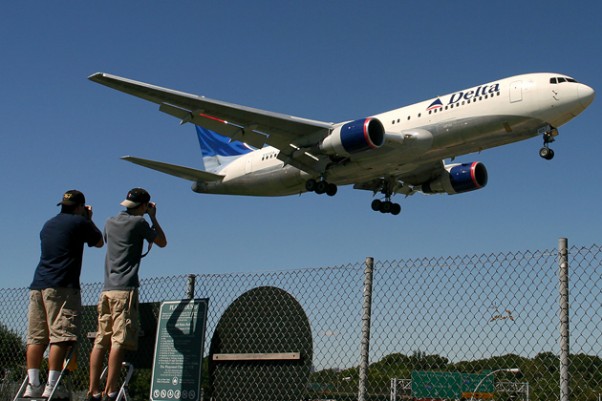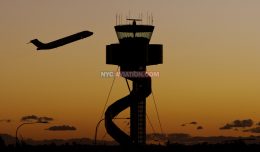Pinterest, the increasingly popular photo sharing website, announced this weekend that they are modifying their Terms of Service after receiving a ton of complaints from its users. The understandable concern came from the disclaimer that Pinterest had the right to sell any uploaded content from its members. Effective April 6, their new terms will no longer claim the right to sell your content, a major victory for anyone who enjoys protecting their creative works.
This is not a new battle in the world of digital photography and creativity. The enhancements of digital photography over the past several years have allowed top quality photographs to be accessible to all, and highly vulnerable to misuse. “Misuse” of course being a kind word for what is most commonly nothing less than theft.
Our Own Battle
Here in the airplane world, aviation photography falls victim to copyright infringement far too often. With so many tens of thousands of enthusiasts that spend thousands of dollars each on their pro-level equipment, then submitting their high-quality work to many photo database sites, it becomes all too easy for others to right-click and print, post or sell as desired.
When confronted with their theft, it’s amazing to see the kind of excuses and ignorance that you are presented with, even from businesses. Seeing your work being used by others, especially for commercial purposes can be infuriating and leaving shooters feeling horribly victimized.

This photo of mine was stolen and used in a 9/11 conspiracy video.
A common one is from airlines, some of whom feel they have free reign on any photo of their aircraft, which is of course not the case. These photos, taken from public locations, belong solely to the photographer, regardless of the photographed subject. I’ve seen airlines use photos lifted directly from Airliners.net, and placed on corporate websites, marketing materials, presentations, advertisements, and office artwork. There have even been examples where the offending company forgot to remove the copyright bar at the bottom of the photo, or still had the watermark clearly visible, which is just plain dumb.
Such stupidity leads to another common example, where websites and companies are under the impression that giving you photo credit is enough to make it acceptable to use your photo. Dropping a photo into an article with the photographer’s name doesn’t make the usage suddenly legitimate. Thankfully, it makes such infringement easier to track by simply Googling your own name.
It is unfortunate how much of my time I have to put into protecting the work of NYCAviation’s photographers and writers. Requesting removal of published images, arguing the law and threatening lawsuits becomes a part of the job, not just for website owners, but for anyone with a camera and an internet connection.
Even written content is stolen regularly. While we do allow partial blurbs that link back to our domain, a full copy and paste onto another site steals the efforts of our staff that spent their time creating it, while also affecting our ad revenue that allows us to operate and build new features for our own members.
What Can We Do?
Not much. Solutions to this problem are few, and for those that do exist, most are simply ineffective.
Watermarks are common for many photos. This only does so much, and I feel it falls flat in the end. It is sad that the integrity of a photo needs to be sacrificed to prevent theft. No one should need to alter their images in fear of theft. Not to mention that techniques are becoming easier and easier for many watermarks to be erased anyway.
Disabling right-click on websites is another sacrifice in that it makes it difficult for regular home users to be able to use the photo legally as desktop wallpaper. Regardless, thieves can still overcome this “security feature” by utilizing the handy dandy print screen button to lift the image anyway.
Ok, So What Can We ACTUALLY Do?
One of the best tools that I have implemented for my own personal work and NYCAviation is to use Google Alerts. Each day, Google Alerts emails me with links to every new location on the internet that my name or the site’s name appears. You’d be surprised how often this results in learning of one of those people that thought that photo credit was a license to steal.
Otherwise, basic awareness is the best defense. Photographers need to know their rights, and they need to stand up for them. I’d hate to say it’s the responsibility of all, but when one shooter allows someone to get away with stealing their photographs, the offender is likely to do it again to someone else. Unmatched theft will continue until someone stands up for themselves.
Looking out for one another is extremely invaluable. Every time I read an aviation business magazine, website or see an airliner photo in the news, I can sometimes know exactly who the photographer was just by noting the style of the shot. I then send a note to the shooter, which acts as either congratulations for the publishing or as a notification for potential infringement.
Stand Ready to Fight
Even after all these years, the war has just begun. Standing up for ourselves and not being complacent, not allowing us to be victims, is the first and biggest step. It is well within your rights to not only demand that offenders remove your images, but to sometimes submit an invoice to a guilty business with threat of lawsuit for ten times the amount if the invoice goes unpaid. Use your voice on social media avenues to let people know who is stealing your photos. Take a stand.
Making people think twice about stealing your work is the best way to not need watermarks, and increasing the value of your creativity for those companies that are excited and proud to publish your excellent work the legal way.
Phil Derner is Founder and Co-Owner of NYCAviation.com. Growing up watching planes across the water from New York’s LaGuardia Airport, his passion for aviation grew with the hobby of aviation photography, and led to him becoming an aircraft dispatcher.







